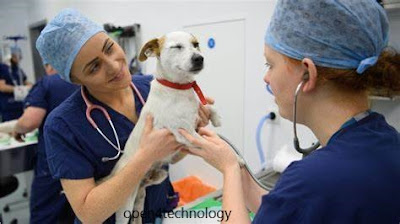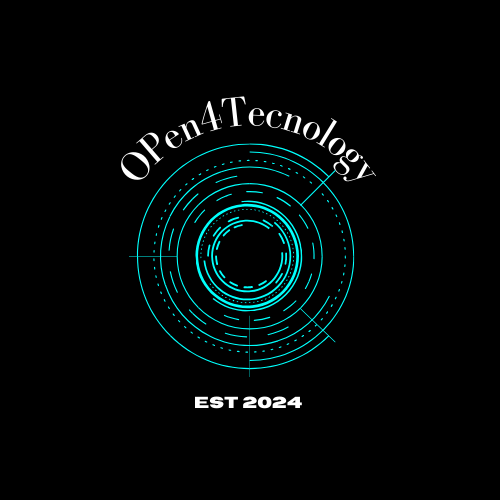Improving Animal Health and Care
Veterinary Technology
Veterinary technology is a rapidly growing field that combines medical knowledge with advanced animal care tools. Veterinary technologists and technicians work together with veterinarians to diagnose, treat, and prevent diseases in animals. They also play an important role in the well-being of pets, livestock, and wildlife. This course not only promotes animal health but also helps in public health by controlling zoonotic diseases.
 |
| Veterinary Technology |
The Role of Veterinary Technologists and Technicians
Veterinary technologists and technicians are key players in providing health services for animals. Some of their responsibilities include:
1) Assist in Diagnosis: Through laboratory procedures such as blood count tests, urinalysis, or fecal exams they help veterinarians to make accurate diagnoses.
2) Nursing Care: These professionals administer drugs, give injections, and monitor anesthesia during surgery. They are responsible for caring for postoperative patients until they recover from illness or injury.
3) X-rays and Imaging: For instance; X-ray units as well as ultrasound equipment among others used to visualize internal body structures which can be seen by these experts who run imaging machines.. among others used for viewing internal body structures that cannot be seen with the naked eye.
4. Client Communication: Educating owners about proper nutrition, medication administration and general care of their animals is another responsibility carried out by them. This is important for good client compliance with treatment plans at home hence the nhis is important for good client compliance with treatment plans at home hence the need for effective communication skills.
5. Animal Handling & Restraint: They should be skilled at holding animals securely so as not only to reduce stress levels during procedures but also to prevent accidental injuries.
Without them veterinary hospitals or clinics cannot run smoothly and pets may end up receiving substandard care which is not ideal.
Advances in Veterinary Technology
Veterinary technology has advanced considerably. This has led to the development of better ways to diagnose and treat animal diseases. Some of these achievements include:
1. Digital Radiography: Unlike traditional X-rays, digital radiography provides clearer images while exposing patients to less radiation. In addition, these images can be quickly shared with other specialists over a networked system.
2. Ultrasound & MRI: These techniques produce detailed pictures showing internal organs hence they help diagnose conditions such as tumors, heart disease, or abdominal problems among others.
3. Laparoscopic Surgery: This minimally invasive procedure uses small incisions and a camera to direct the operation. It causes less pain and allows animals to heal quickly.
4. Telemedicine: Veterinary telemedicine enables veterinarians to consult with specialists or care for animals from a distance. This is particularly helpful in rural areas where there may be limited access to veterinary services.
5. Wearable Technology: An activity tracker device can keep an eye on what an animal does all day long and its health condition including vital signs like temperature pulse rate etc.
Relevance of Veterinary Technology in Animal Health Care
Veterinary technology is essential for health maintenance or improvement in animals. It allows for diseases to be identified early and treated promptly, reducing the consequences of the same with improved recovery rates. Veterinary technology impacts animal health in several ways as described below.
1. Early Detection: Sophisticated diagnostic devices help spot diseases at their nascent stages thereby simplifying their treatment and lowering cost.
2. Improved Therapies: Better treatments are possible through technological interventions such as precise surgery and targeted therapies by doctors.
3. Advanced Monitoring: Wearable technologies working together with remote monitoring tools provide a platform for continuous tracking of an animal’s well-being hence any needful action can take place anytime.
4. Preventive Measures: Routine checkups supported by scientific developments help in preventing conditions from worsening to critical levels.
5, Personalized Medicine: Genetic testing done on different drugs enables treatments that suit one creature but not another depending on the specific genetic makeup and health needs of every organism.
Consequently, it is logical to conclude that veterinary technology presents a ray of hope for any living thing without which no animal will have life.
Education and Training for Veterinary Technologists
Educational Programmes: In most cases, veterinary technicians earn a two-year associate degree through a program while technologists go for bachelor’s degrees that take four years. These courses include animal anatomy, physiology, drugs, and medical terms.
On-the-Job Training: Every student must have practical knowledge. Real-life experiences are obtained in veterinary clinics, animal hospitals as well as research facilities.
Certification and Licensing: After getting educated, veterinary technicians and technologists need to pass certification examinations. This is normally the Veterinary Technician National Exam (VTNE) in the US. Some states also stipulate further licensing requirements.
Continuing Education: The field of veterinary technology is fast evolving. For this reason, professionals must keep up with the latest advancements and techniques through continuing education courses as well as professional development opportunities.
It takes such intensive training so that there will be proper care offered to animals by vet techs or technologists.

Education and Training for Veterinary Technologies
Future trends in veterinary technology
The future of veterinary technology looks promising, given that a number of trends will shape it further. Some of these trends are:
1. Artificial Intelligence (AI): This field is expected to revolutionize diagnostics and treatment plans. AI can review medical images and data to identify patterns and envisage outcomes thereby assisting vets make accurate decisions.
2. Genomic Medicine: Progress in genetic research would bring about personalized medicine for animals. Genetic testing can determine susceptibility to certain diseases thus allowing preventive measures as well as particular treatments.
3. Robotics: Robotic surgery and automated lab equipment will enhance accuracy and speed in veterinary procedures. Robots can help with complicated surgeries or common tasks hence limiting the possibilities of human mistakes.
4. Biotechnology:
New biotechnological innovations such as regenerative medicine, and stem cell therapy could cure conditions that were once thought untreatable.
5. Sustainability: Veterinary practices are rapidly becoming more eco-friendly, including sustainable materials sourcing, energy-efficient clinic designs, and other green technologies incorporated within veterinaries
Conclusion
Veterinary technology is a crucial part of contemporary animal health care, improving the veterinarian’s and technician’s capability to diagnose, treat, as well as prevent diseases in animals. This field keeps on becoming more complex with continuous technology improvements resulting in improved outcomes for animal patients. A dynamic field needs veterinary professionals who are educated and continuously trained. Advances in AI, genomics, professionals who are educated and continuously trained. Advances in AI, genomics, robotics, biotechnology, and sustainability will further shape the future of veterinary technology thus ensuring that our pets receive the highest quality care possible.




0 Comments